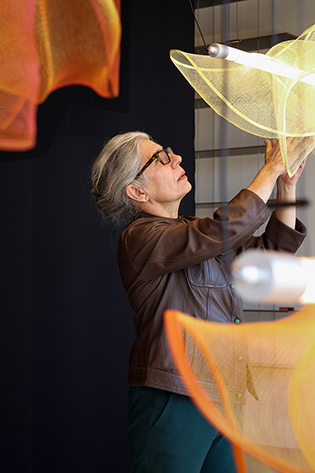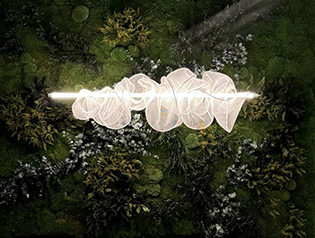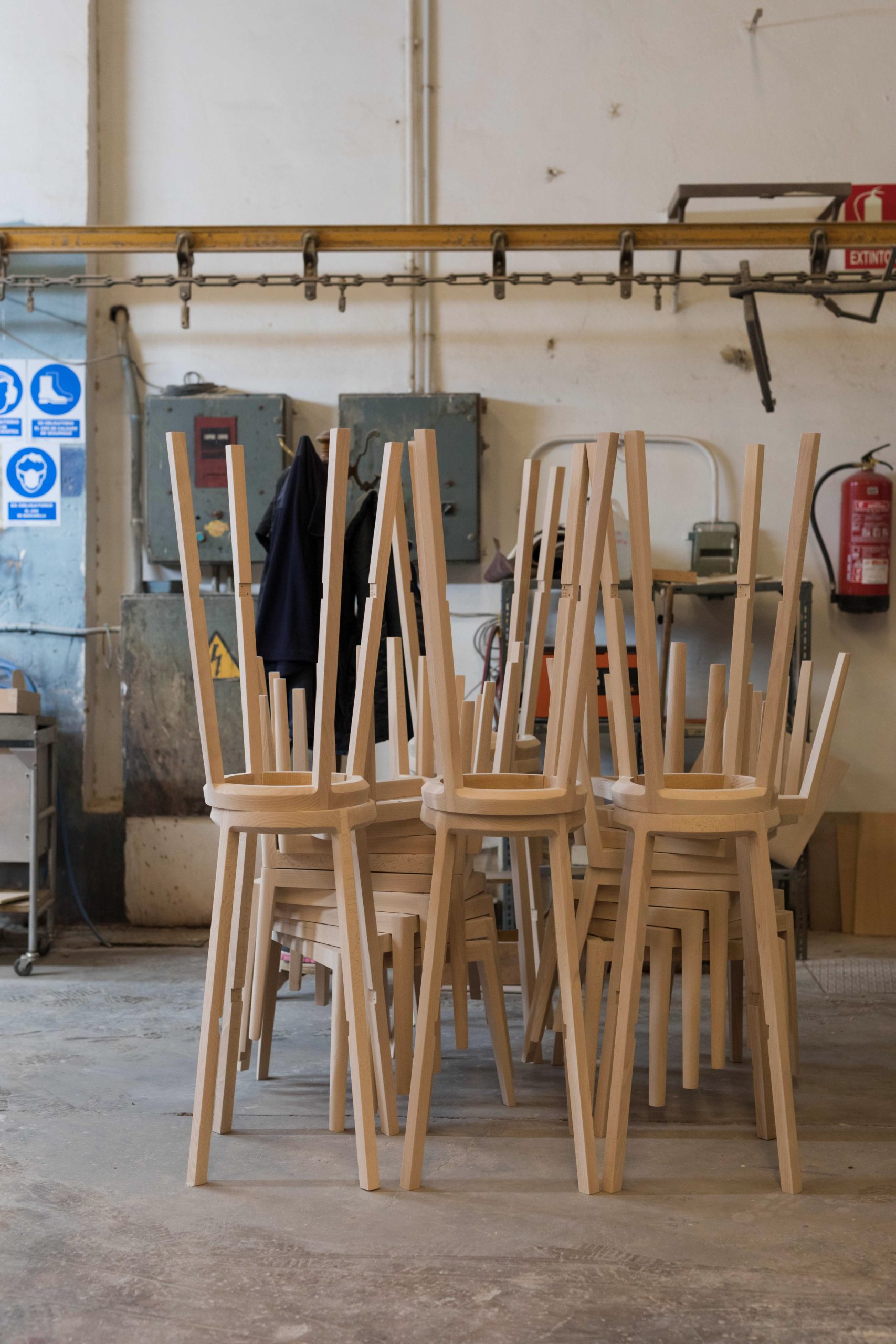The Centre Pompidou’s creation was in many ways an expression of rebellion: it ‘wasn’t supposed to be a monument but an event, a happening.’
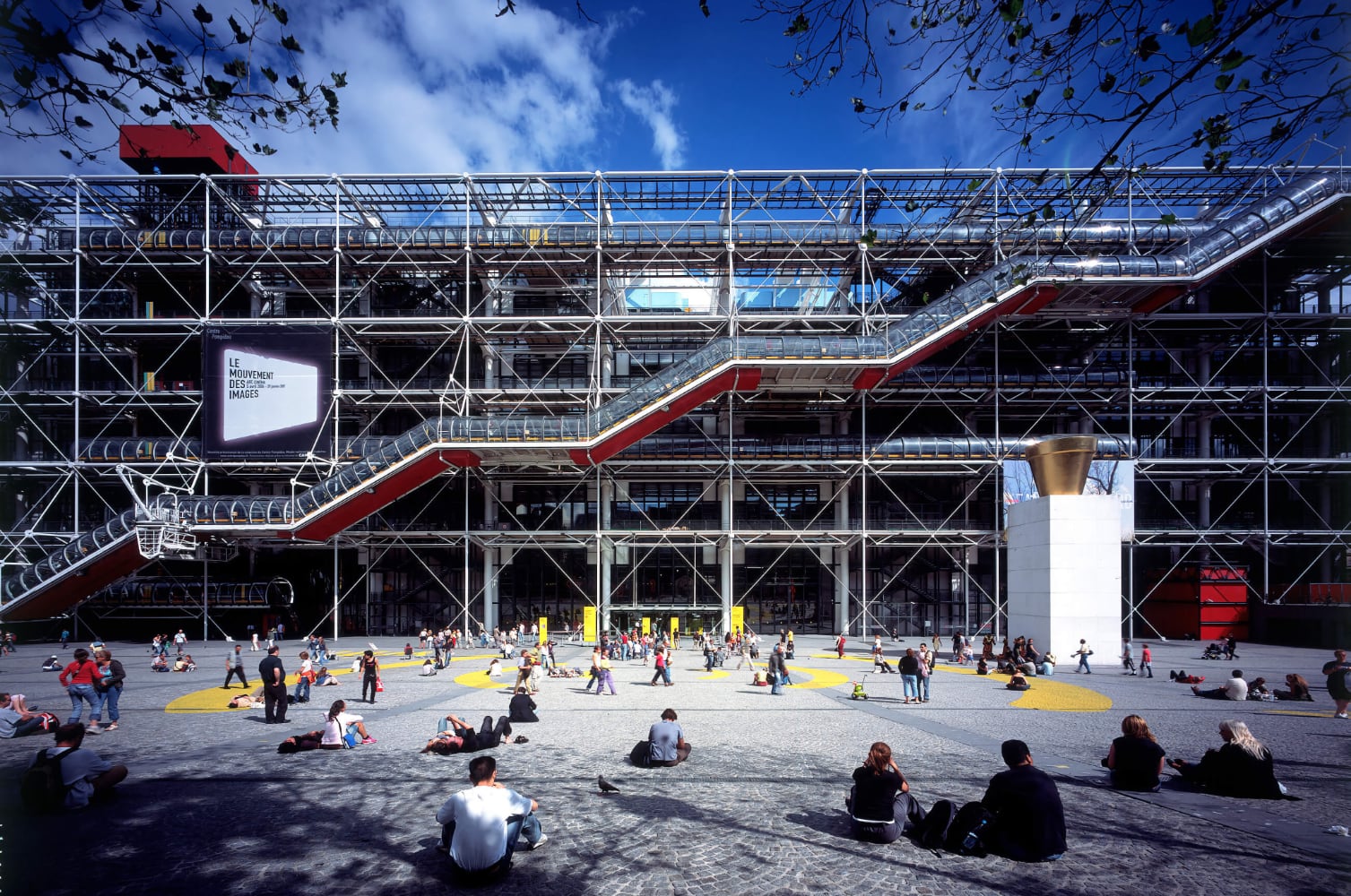
The Centre Pompidou with its large public square. Photo © Rogers Stirk Harbour + Partners.
The Centre Pompidou is a magnificent feat of architectural prowess. A celebrated Parisian landmark, this iconic building helped to revitalise the city’s Beaubourg and neighbouring Marais districts. Constructed between 1971–1977, the centre was imagined as a cross between ‘an information-oriented computerised Times Square and the British Museum’. It was built as a democratic place for all people, with half of the site developed as a public square—a broad piazza that was modelled on the design of a classic Roman piazza. The Centre Pompidou’s impressive inside-out construction—with structure and services placed on the outside—ensured its internal spaces were completely flexible and uninterrupted.

The Centre Pompidou roof with its air conditioning and integral structure. Photo by Mika Baumeister on Unsplash.
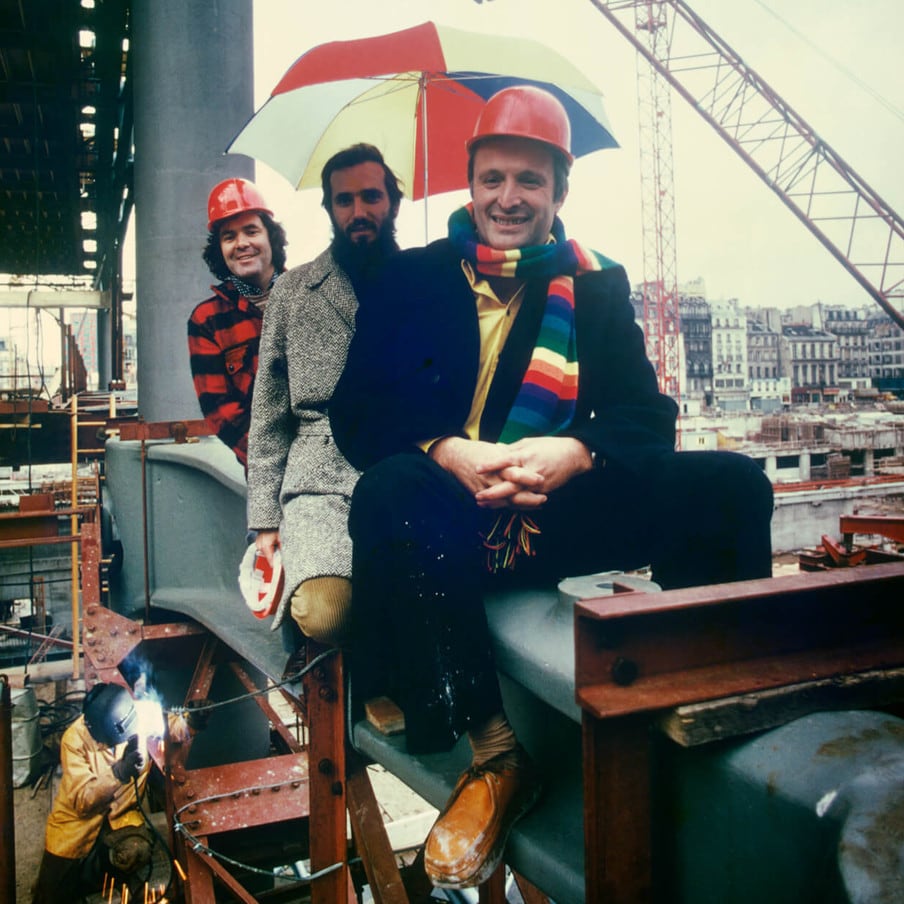
Richard Rogers (front) and Renzo Piano (behind) at the Centre Pompidou’s site. The project’s lead engineer, Peter Rice, is at the rear. Photo © Rogers Stirk Harbour + Partners.
The comprehensive plan for the Centre Pompidou was proposed by two young, up-and-coming architects: Richard Rogers and Renzo Piano. The pair won an international competition in 1971 to design a large art gallery (the competition was held by the then French president, George Pompidou, after which the centre is named). The proposed scheme was one in which the building’s interior was wholly adaptable, and its exterior components (including corridors, ducts, escalators, and lifts) could be ‘clipped on and off’.

Boldly expressed, services include these nautical-looking extractors. Photo © Rogers Stirk Harbour + Partners.
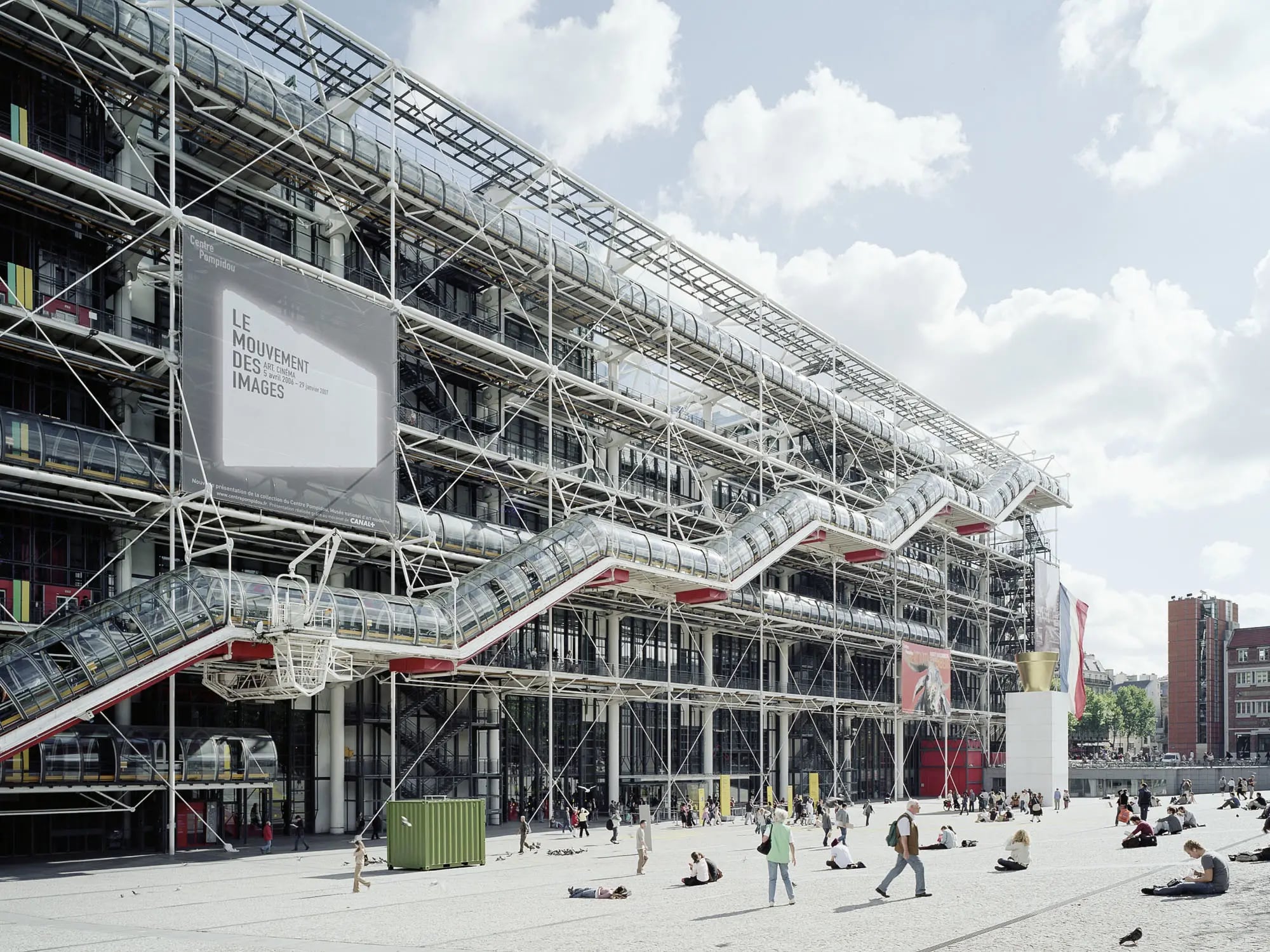
The ‘caterpillar’ escalator. Photo © Hiepler, Brunier, via Divisare.
The Centre Pompidou’s most notable external feature is arguably the expansive diagonal escalator. Known fondly as the ‘caterpillar’, its transparent design offers unparalleled views over Paris. When gazing at the exterior, the vivid use of colour is striking. Four bold colours—blue, yellow, red, and green—each denote a particular feature, according to a code devised by the architects: blue for air conditioning, yellow for electricity, red for escalators and lifts, and green for water circuits.
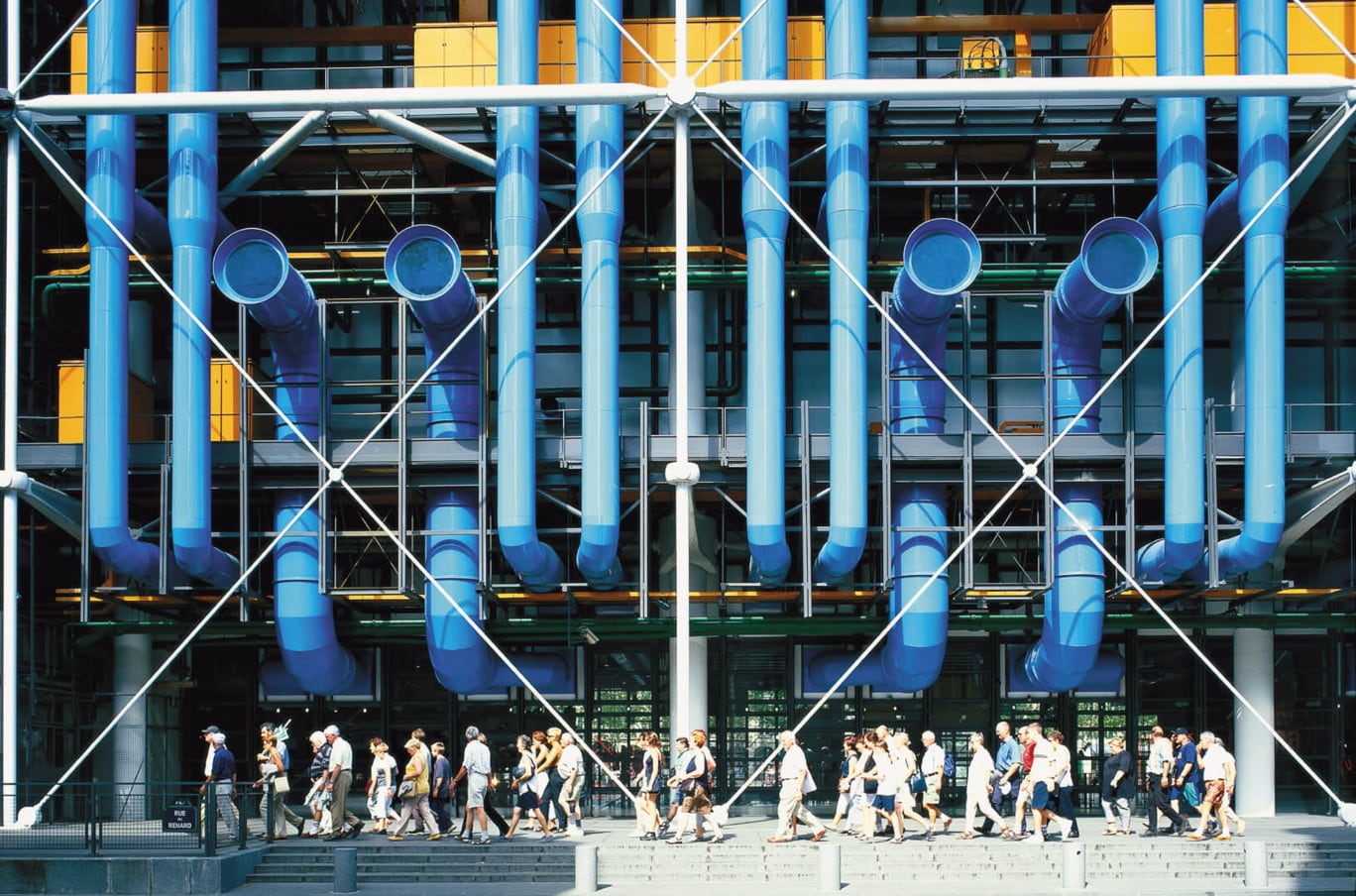
Colour-coded external services. Photo © Rogers Stirk Harbour + Partners.
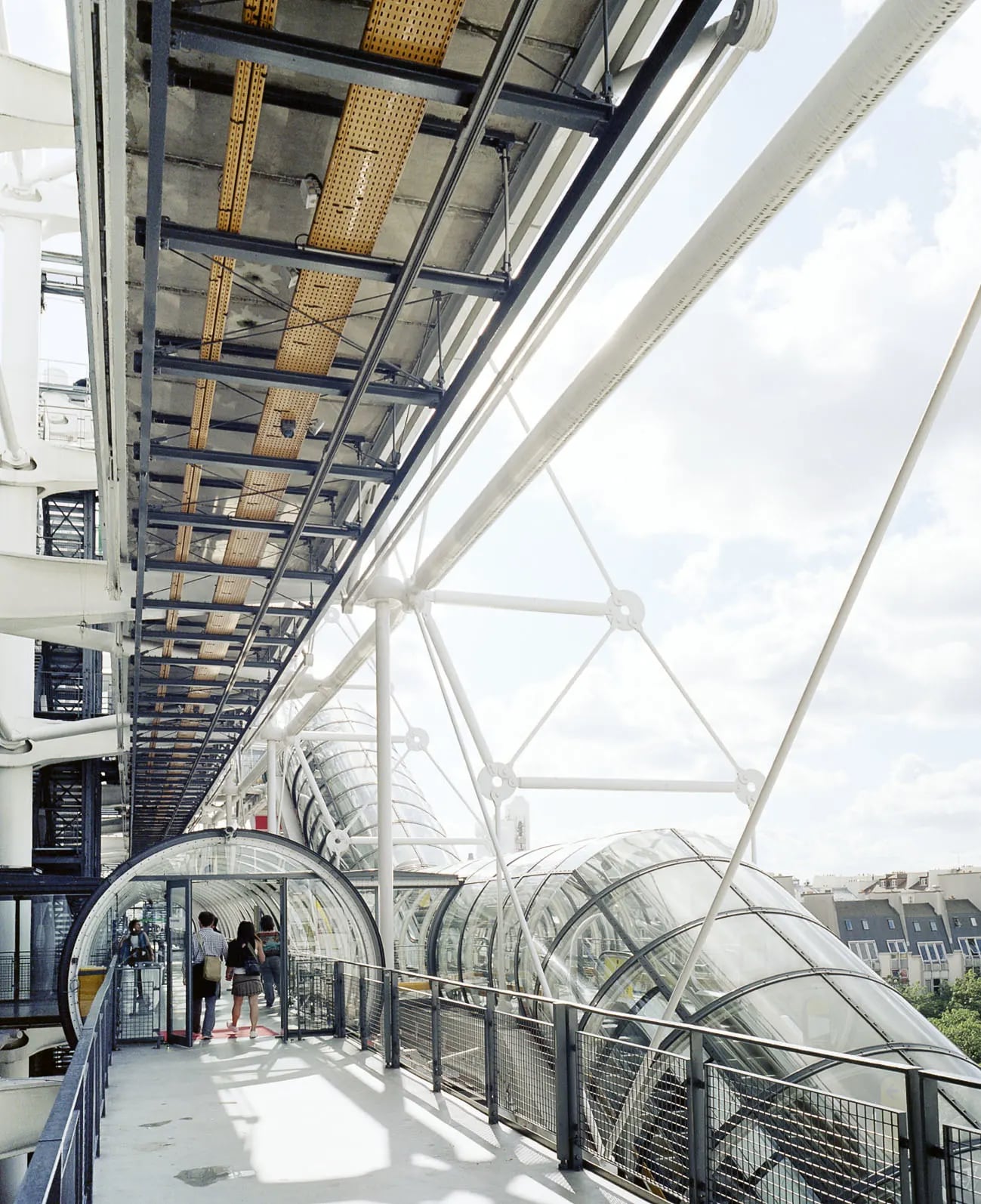
An external corridor. Photo © Hiepler, Brunier, via Divisare.
The Centre Pompidou’s design epitomised high-tech architecture, the last major architectural style of the 20th century. In essence, it was to act as ‘an ever-changing framework, a Meccano kit, a climbing frame for the old and the young.’ A cultural institution, the centre is, as its architects had intended, a ‘genuinely living organism’, a hive of activity that extends across ten levels. Attracting more than seven million visitors every year, the Centre Pompidou’s activities include: the collection of the Musée National d’Art Moderne (France’s national museum for modern art), the Bibliothèque Publique d’Information (public reading library), a performance theatre, and two screening rooms. As well as these crowd-pleasers, visitors doubtless flock to the Centre Pompidou simply to enjoy its spectacular facade and to relax in the square.

Centre Pompidou. Photo by G. Meguerditchian via Surface.

Views over Paris from the Centre Pompidou. Photo © Hiepler, Brunier, via Divisare.
With the passing of Richard Rogers (1933–2021), the partners and staff of Rogers Stirk Harbour + Partners remember him as ‘a colleague and friend, who was gregarious, always completely free of status, always inclusive, always exploring and looking ahead.’ Rogers embraced community, collaboration, and social responsibility. ‘Humanism’ was a word that dominated the way in which he thought about the world. The Centre Pompidou is a testament to his vision and to a style of architecture that placed people at its core.
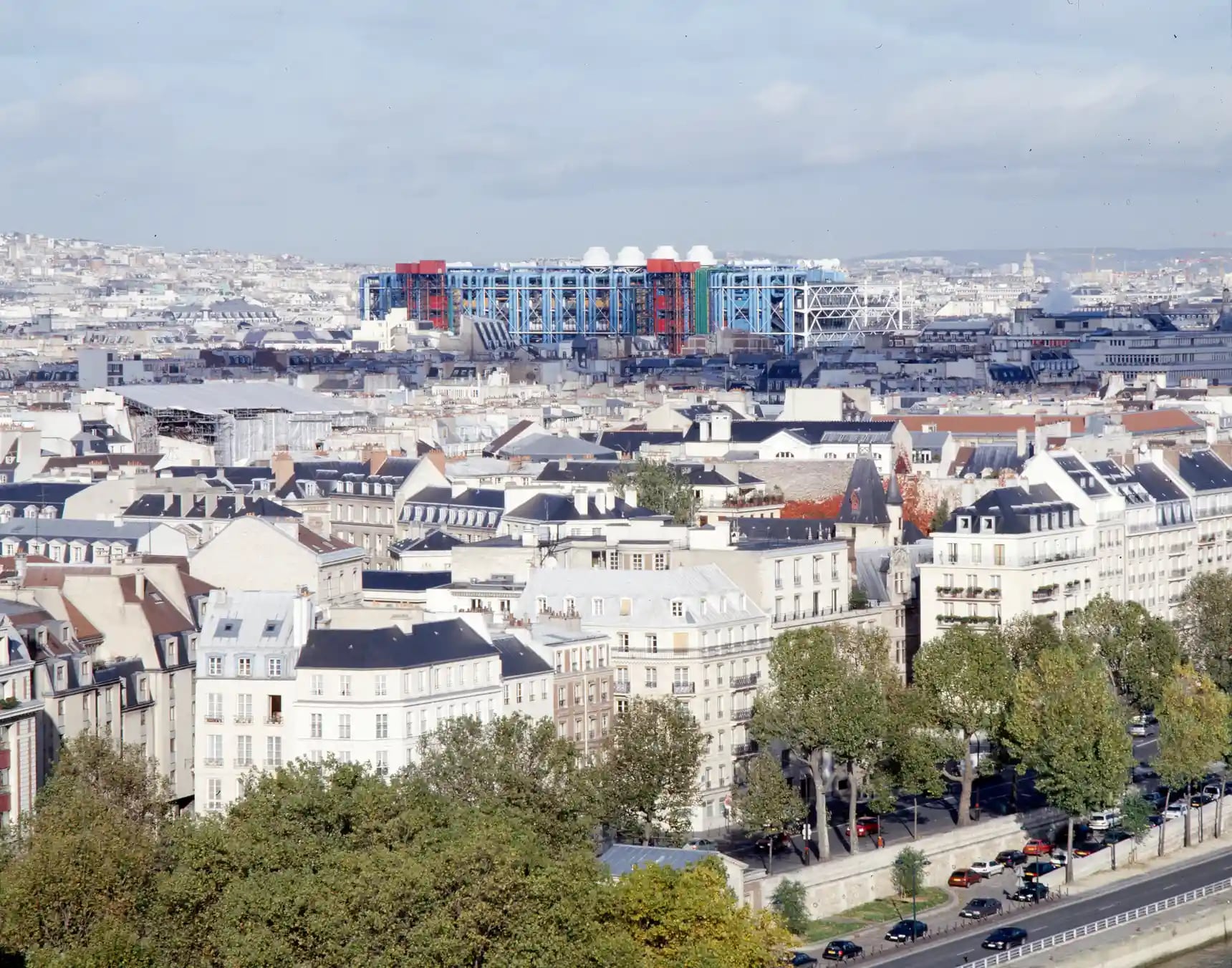
The Centre Pompidou seen across Paris. Photo © Centre Pompidou.
Centre Pompidou is part of LZF’s ‘Building Brilliance’ series.

